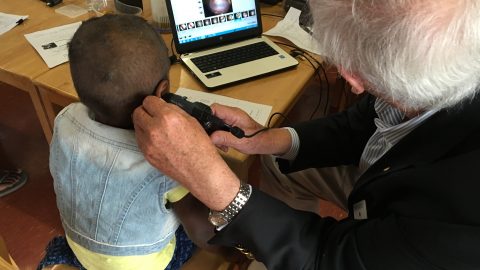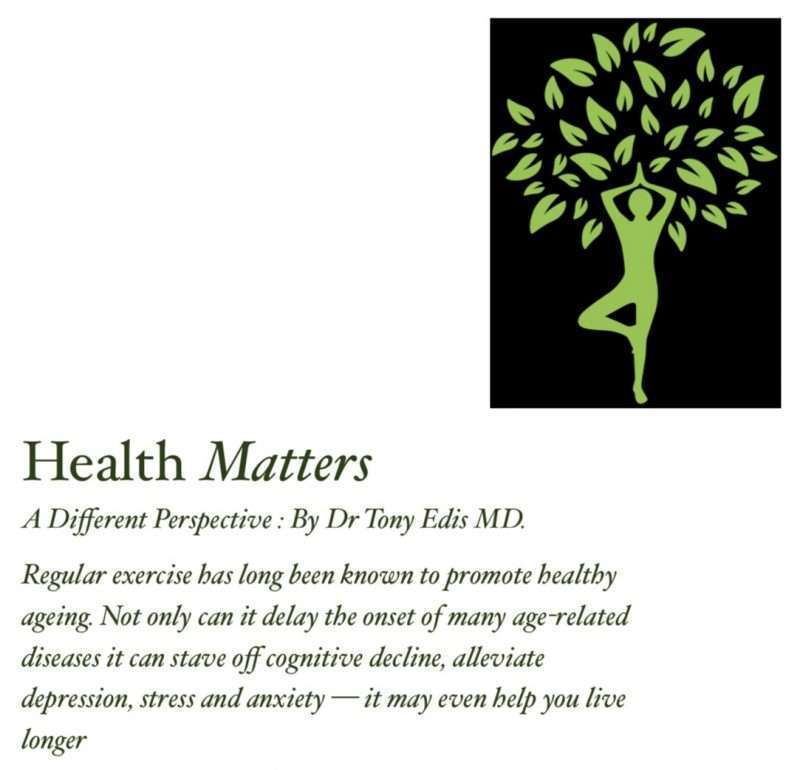
Hundreds of studies conducted over the past 50 years have demonstrated that exercise can help you feel better and live healthier and longer. Sound too good to be true ? — it’s not.
This Health MATTERS report looks at the science behind many of the important questions you might have about exercise. Such as –
* how does it prevent illness, maintain health and help fight ageing?
* what type of exercise is best?
* how much exercise is required to derive health benefits?
FACT — HUMANS WERE MADE TO BE ACTIVE
In these reports I have often referred to that guiding tenet in science that “nothing in biology makes sense except in the light of evolution”.
The human genome (ie, our entire “being”) was formed as a result of Natural Selection during the several million years of our hunter-gatherer existence, when lots of physical activity was obligatory to engage in hunting, warring and escaping predatory animals. In this context, we can see that all of our basic physiologic processes and homeostatic mechanisms which maintain our health evolved against the background of habitual vigorous exercise.
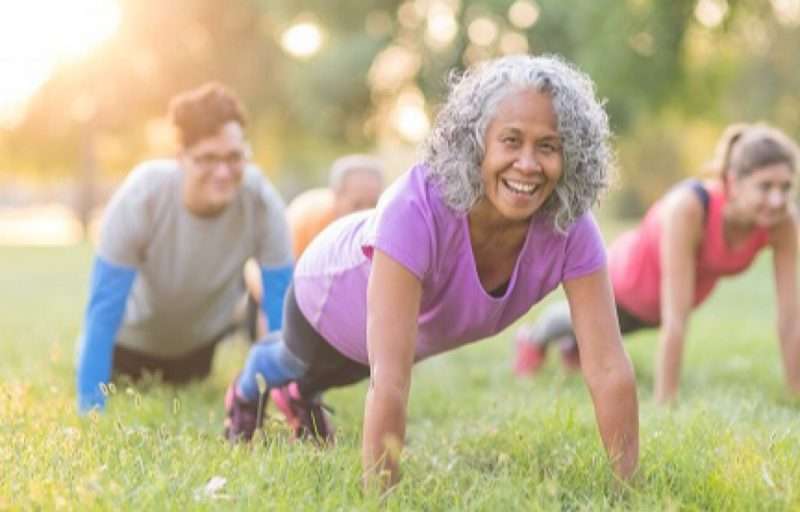
Now compare that existence to our contemporary, sedentary Western lifestyle and one can begin to understand why so many of the health problems afflicting modern society might be prevented or ameliorated by resurrecting the primitive imperative to engage in regular exercise. Some might argue that it’s possible to lead an inactive life and still live to a ripe old age, but it isn’t likely.
WAYS IN WHICH EXERCISE HELPS FIGHT AGEING AND ILLNESS
There are several possible mechanisms –
* Exercise activates that remarkable process, known as Autophagy, which replenishes and reinvigorates all our body cells
Autophagy was the subject of my first Health MATTERS article here on FSN. I referred to it at the time as one of Science’s “best kept secrets” because, even though the Nobel prize was awarded for its discovery in 2016, most people have never heard of it. In fact it probably underpins many of the health benefits attributed to both exercise and intermittent fasting.
Autophagy is a process whereby decrepit cells are revitalised and rejuvenated by removing their worn out parts and junky proteins and recycling them to build new and fresh cellular components. At a tissue or organ level autophagy translates into healthier looking skin, better cognitive function, improved kidney function and better control of blood sugar and lipid levels. It may even undo, or at least halt, life-threatening hardening of the arteries.
Exercise, like intermittent fasting, is known to be a potent stimulator of cellular autophagy, although data is still being collected on the duration and intensity of exercise required to invoke the process.
* Exercise also promotes Nitric Oxide (NO) production and release by the cells lining our arteries
Again in Health MATTERS (#5) I discussed the important role this colourless gas plays in maintaining cardiovascular health. Not only does it relax the smooth muscle in the arterial wall to reduce blood pressure and improve blood flow, it also prevents fatty material in the blood from sticking to blood vessel walls to form plaque deposits (atheromas) which cause subsequent hardening of the arteries.
Exercise training has been shown in many animal and human studies to augment the production and release of NO from the endothelial cells lining arterial blood vessels.
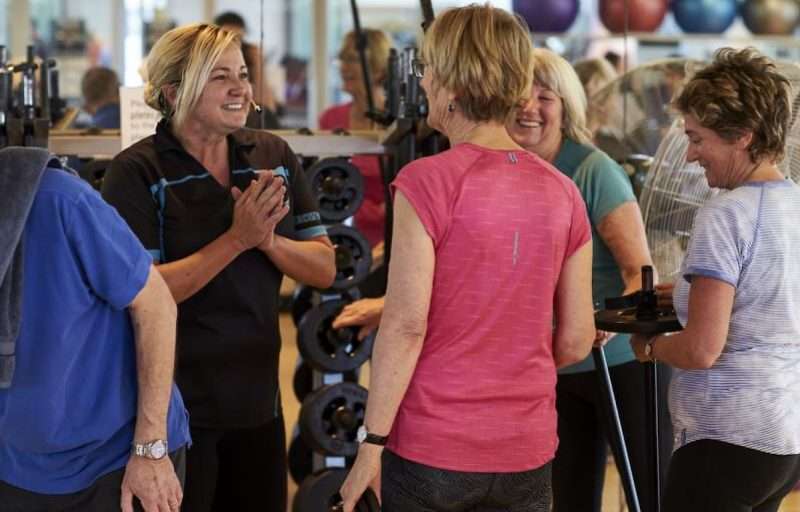
This occurs even if the arteries have already been damaged, as in coronary artery disease. In fact, there is some evidence to suggest that the diseased arteries have a better response than healthy arteries (if this doesn’t prompt older men to undertake some exercise, I don’t know what will !).
The news gets even better — if regular exercising sessions are maintained, structural changes can actually occur in the arteries which lead to a permanent increase in calibre, with a lasting improvement in blood flow.
One caveat: the beneficial effects of exercise due to increase in NO bioactivity, dissipate fairly quickly (within weeks) if exercise training is ceased. So, the message is — keep it up!
* Exercise improves muscle strength which assists in maintaining balance and preventing falls
There is loss of muscle mass and strength with ageing.
As you might expect, this correlates with an increased incidence of falls in the elderly, which are a leading cause of injury-related mortality and morbidity and one of the most common reasons why the ability to live independently is lost.
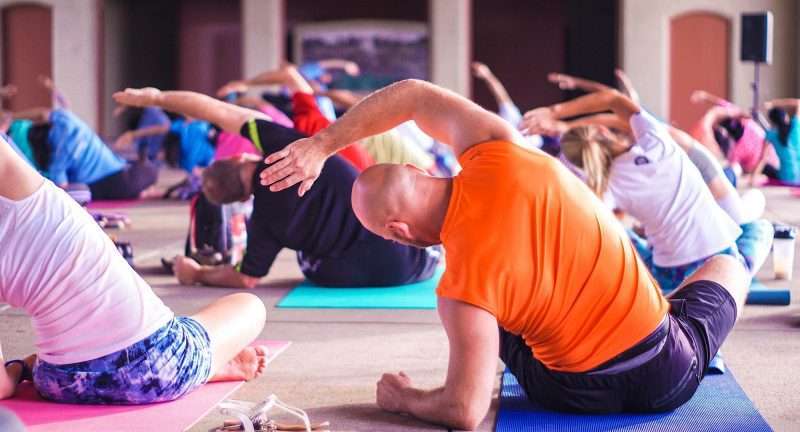
Physical activity and strength training can go a long way toward limiting that loss of muscle mass and strength, while improving balance and stimulating postural control — all of which are key to preventing falls and maintaining an independent existence.
If you can avoid the lack of mobility imposed by a fall, your chances of living longer are improved. According to a study carried out by the Finnish Centre for Interdisciplinary Gerontology, which followed 1,000 adults for 8 years, the relative risk of death in men and women who were impaired and sedentary was three times greater than those who had some impairment but were fully mobile and active.
* Exercise encourages joint movement, improves flexibility, prevents the progression of arthritis and relieves arthritic pain
Specifically, regular exercise can prevent loss of muscle mass and tone, while keeping joints stable and improving their function and flexibility.
Contrary to popular belief, there is little risk of damage to arthritic joints from regular moderate intensity exercise.
In fact, studies have shown that regular movement of arthritic joints can indeed alleviate pain. This is especially true of chronic low back pain where regular exercises to improve core muscle strength are key.
A study from the University of Alberta some years ago (2009) found that people with chronic back pain who exercised four days a week had 36% less disability than those who exercised only two to three days a week.
* Exercise may extend longevity
Many scientists consider the loss of healthy mitochondria to be an important underlying cause of ageing in mammals.
Studies in mice have shown that higher levels of physical activity can preserve mitochondrial function and promote longevity.
Similarly , exercise prevents the shortening of telomeres which is normally seen with ageing. Telomeres are the caps on the ends of DNA strands, which help preserve their integrity. Many processes affect telomere length but, in general, longer telomeres are believed to be a plus for reducing risk of age-related diseases.
* Exercise may suppress cancer progression and viability
It is well established that being physically active is related to enhanced survival for patients with many different types of cancer.
The mechanisms underlying this phenomenon have so far proven elusive but one study being conducted locally (at the Exercise Medicine Research Institute at ECU) suggests that cytokines released from muscles during resistance training exercises might play a role by suppressing tumour growth as well as by signalling immune cells to identify and destroy cancer cells.
HOW MUCH AND WHAT SORT OF EXERCISE IS BEST?
Official guidelines call for adults over 65 years to be getting at least 150 minutes a week (roughly 20 minutes per day) of moderate to vigorous physical activity, sufficient to cause some shortness of breath and an increase in heart rate.
How realistic is this?
Finding the time and motivation to undertake this type of exercise on any regular basis takes commitment and willpower. According to the latest figures, only one in four people over the age of 65 years are currently meeting these recommended exercise guidelines. Convincing someone who may have been habitually inactive to undertake some exercise, may be particularly challenging. Fifty percent of sedentary adults in a recent US survey indicated that they had no intention of changing their behaviour.
Against this depressing backdrop there is some reassuring recent evidence that frequent, low level physical activity — the kind humans did for thousands of years, before the Modern Era — may actually work better for us than occasional bouts of vigorous exercise you get as a gym rat.
The fact is that any form of exercise is better than none.
* Walking (or swimming or cycling)
Just getting up out of your chair and taking a walk or going for a swim or a bike ride, can get you started on your way to preventing heart disease and diabetes, high blood pressure, depression, memory problems, and more.

In fact, the latest research shows that sitting may be more harmful to your health than smoking. This knowledge has spurred a rush to introduce ergonomically designed work stations with stand-up desks to discourage long periods of sitting on the job.
If you haven’t been active in the past, start walking five minutes a day, then begin to increase your activity level. If you do it vigorously enough, it is the overall best exercise for regular aerobic activity. It requires no equipment, everyone knows how to do it and it carries the least risk of injury.
You should walk or swim at a sufficient pace to get your heart beating faster. For moderate exercise, the recommended target is roughly 50 to 70 percent of your body’s “maximum heart rate” — calculated by subtracting your age from 220.
* Strength Training *
Ideally, one should also undertake some form of strength training as you get older, as it will help prevent the loss of bone and muscle mass which accompanies ageing. By building muscle you’ll not only get stronger, you’ll improve your reaction time and maintain better balance, which can make everyday activities easier and prevent falls.
Aim for simple repetitive workouts with light weights (say, 1-2 kg), — the kind you can do at home using cheap light- weight dumbbells for upper limb strengthening exercises and you can do squats to build up the muscles of the legs and thighs.
* Flexibility and Balance Exercises*
Flexibility and balance exercises are very important as the body ages to overcome stiffness in joints, to retain their full range of motion and to preserve tone in the various muscle groups.
(* There are any number of group classes available to teach fitness, balance and strength exercises e.g. Aerobics, Aquarobics, Dance, Zumba, Boxing, Pilates, Spin, or FBS (Fitness, Balance, Strength). Taking such classes 2 to 3 times a week is an expense but could be money well spent on your preventive health. Just a cautionary note —if you are unfit, overweight, or have a history of heart disease, stroke or diabetes it is best to see your doctor before starting any new strenuous exercise regime.)
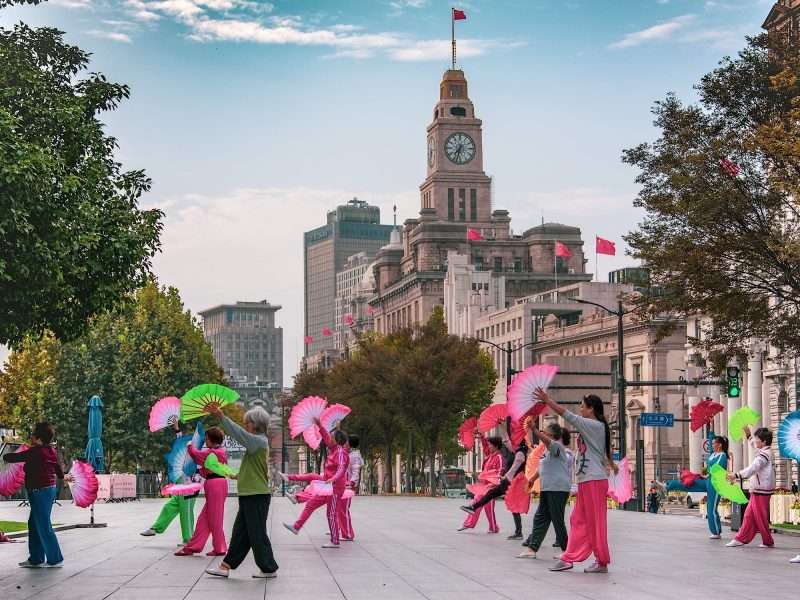
Lack of time or resources, however, shouldn’t be an obstacle to your exercising. You can do great workouts at home, even while watching TV. No trips to the gym. No group classes. And you don’t need big-bucks equipment or the latest all- the-rage gear and garb. The fact is that over 50% of new gym members quit within 6 months of getting a membership, at any rate.
Exercises of the type illustrated on some of Dr Michael Mosley’s many YouTube videos, can be performed at home. (Source; You Tube HIIT at home – The Truth about getting fit – BBC One).
Don’t be bamboozled by the term “High Interval Intensity Training” (HIIT). The original advocates for high intensity training described workouts which were brief, very intense, using heavy weights and driving muscles to the point of exhaustion. Nowadays there is a recognition of the fact that vigorous exercise like this probably carries no more benefits than moderately strenuous activities as described in the videos referred to above, which can be performed at home several times a week.
• Technological Aids
Video game technology entered this arena in 2006 with Nintendo’s Wii Sports, played on a video game console. It is a collection of five sports simulations with the players using the Wii remote to mimic the action performed in real-life sports, such as swinging a tennis raquet. The game features training and fitness modes which monitor the players’ progress. It had sold over 82 million copies by the end of 2017.
Now we have Virtual Reality (VR) games simulating exercise. For example, a player, wearing a VR Headset, can paddle a stand-up surf board using hand-held motion- sensing controllers to paddle while exploring a tropical island archipelago. The trackable controllers monitor the energy expended by the paddler and display the output on the paddle handles in real time.
Wearable Fitness Trackers, ( which include such brands as Fitbit and Garmin along with various apps used in conjunction with Apple Watches and iPhones) have increased in popularity over the past decade — the industry grossed over $10 billion in 2020 alone.
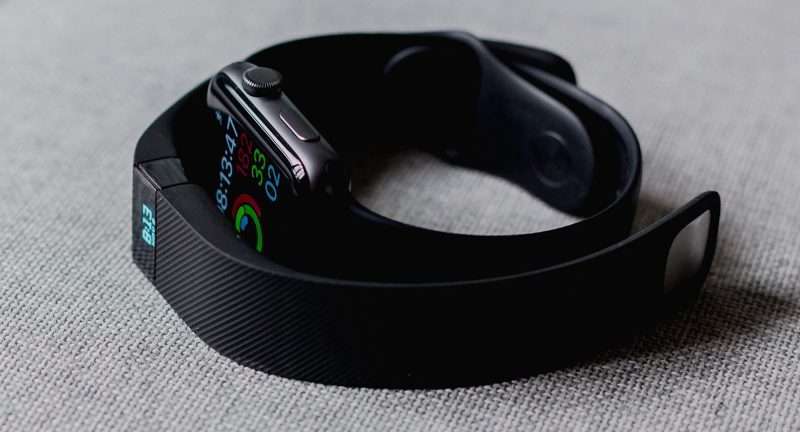
But how well do they work?
These devices claim to be able to track various metrics, such as steps walked and calories burned, but their accuracy is questionable.
They are probably most effective when used as a general guide for comparing your relative physical activity from day to day and for getting people motivated to exercise and to stay committed and focused on reaching their goals.
Many fitness trackers hone in on the magical number of 10,000 steps a day but where did this figure come from?
The number harks back to the 1964 Tokyo Olympics, when an enterprising Japanese watchmaker, hoping to capitalise on the interest in fitness, mass-produced a pedometer with a name that means “the 10,000 step meter”, because the Japanese character for “10,000”, 万, resembles a person walking. So, this number, which had no scientific basis, became entrenched in our collective consciousness as the daily walking goal.
The best science I can find on this subject indicates that we do not need to take as many as 10,000 steps a day (which is about 5 miles) for the sake of our health and longevity.
An extensive study involving almost 5,000 middle-aged men and women of various ethnicities, reported just last year, found that most of the protection afforded by walking, vis-a-vis the risk of dying prematurely of heart disease or any other cause, was achieved with only 8,000 steps a day. Statistically, little further benefit was achieved by undertaking any additional steps.
That’s fortunate because studies have also shown that few of us can reach that 10,000 step goal anyway.
In a famous study conducted in Belgium in 2005, where local citizens were provided with pedometers and asked to walk at least 10,000 steps a day for a year, only 8% achieved the goal. On followup 4 years later, almost no-one was still striding that much.
REALISTIC GOALS — A PERSONAL REGIME
I have owned a Fitbit wristwatch fitness tracker for several years and I can personally attest to the difficulty in meeting a daily goal of 10,000 steps.
Mostly, I can clock up 5,000 steps with the activities of normal living, without even trying — as I’m sure most people can.
To add another 2,000 to 3,000 steps a day in order to meet the “sweet spot” of 8,000 steps requires motivation and a conscious effort. The trick is to find an activity you enjoy, be it swimming, cycling, boxing, playing tennis, squash kayaking or whatever — so long as you are moving and working up a sweat by exercising your heart and lungs, and using muscles and joints.
In my case, this usually takes the form of a brisk 15-minute, uphill walk, which is sufficiently taxing to cause shortness of breath; or group FBS (Fitness, Balance, Strength) sessions at the local sports centre, which my wife and I try to attend twice a week.*
(*I’m the only male in the class — have been for more than 11 years — which may, or may not, say something about the ageing male demographic and its attitude to organised exercise?)
These classes have the additional benefit of providing strength, balance and flexibility exercises as well as some additional aerobic cardiovascular stress.
A game of tennis certainly quickly adds to the total, although playing golf with a ride-on buggy for conveyance makes only a limited contribution.
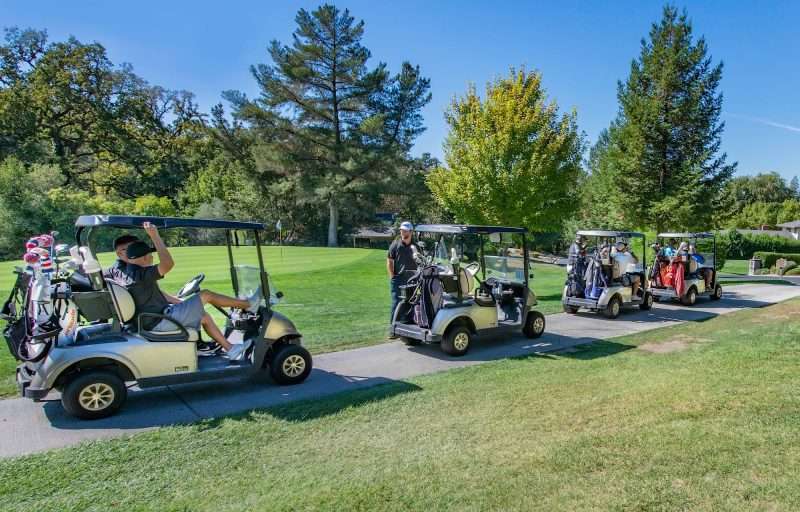
Combined with Intermittent Fasting (see: Health MATTERS #1), this exercise regime is essential to maintaining our physical fitness and mobility in order to fully enjoy and hopefully, prolong our lives.
My own experience has taught me that in this quest, one would do well to remember the old adage that “The perfect is the enemy of the good”. Any exercise is better than none — just moving your body in some way is far better than being a couch potato.
* By Dr Tony Edis MD
** Read Dr Tony Edis MD’s other Health MATTERS articles
While you’re here –
PLEASE HELP US TO GROW FREMANTLE SHIPPING NEWS
FSN is a reader-supported, volunteer-assisted online magazine all about Fremantle. Thanks for helping to keep FSN keeping on!
** Don’t forget to SUBSCRIBE to receive your free copy of The Weekly Edition of the Shipping News each Friday!



